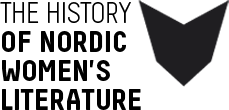L. Onerva belonged to the new generation of academically trained women, and penned more than thirty works. Her first book, Sekasointuja (1904; Jangled Harmonies), was a poetry collection, and she is most remembered for a poem that “associates joie de vivre with suffering”.As a prosaist, however, she has been called “too intelligent, too analytical” Nevertheless, she wrote the first modern Finnish novel.
Tag: Poetry
“My entire being has almost been shattered by the overwhelming power of love.” The power of love in this 11 November 1918 diary entry by Finnish author Aino Kallas was the very wellspring of her artistry.Maila Talvio’s writing found itself at the epicentre of the Nordic debate about sexual morality and was inspired by Ellen Key and others. Beneath the concept of enlightenment and liberation, however, lurks a coherent narrative of sexual fear, pessimism, and longing for death.
“I am no woman”, Edith Södergran wrote. Her poetry is about the power of self-definition. Her contribution to a new world is to take leave of women’s marginal role and plant herself proudly on the world stage.She spent her brief career as a poet in a state of relative disgrace. The critical debate often centred around the question of whether she was a raving lunatic or merely off her rocker.Södergran’s writing is an ongoing process that seeks to demonstrate the inability of language to mirror the experience of being composed of good and evil, femininity and masculinity, executioner and victim.
Súsanna Helena Patursson one of a number of women writers in the national movement. She wrote the first Faroese theatre play, Veðurføst (Layover Because of Bad Weather), which was performed in 1889. She encouraged women to participate in the public discussion forum, to get an education, and she instructed them as to how house and home should be organised. She edited and published the first Faroese women’s magazine, Oyggjarnar (1905-08; The Islands), making housekeeping, interior design, and cooking recipes a national and political issue.Among Paturssons female successors may be counted women such as Billa Hansen, Andrea Reinert, and Maria Mikkelsen. While these women travelled out into the world in order to learn, get ideas and, not least, experience, Johanna Maria Skylv Hansen’s writing took her back to the old rural community.
Hulda Garborg wrote a lot, alternating between articles for journals and novels, but she concentrated particularly on various theatre genres. Much of her work was written in connection with the nynorsk movement, which in the 1880s and 1890s received increased impetus, with Hulda Garborg as one of its prominent figures. From 1910 until 1912, Hulda Garborg was the leader of a touring theatre company, Det Norske Spellaget, which travelled along the Norwegian coast. The success of the tour gave Hulda Garborg the courage to set up a permanent stage in Christiania for nynorsk drama.The very next year saw Det Norske Teatret (The Norwegian Theatre) become a reality. She sat on the board for many years, and she also occasionally directed shows, but what she really wanted to be was a writer. She uses material from Norwegian national literature and the Norse heritage, but she was also inspired by mysticism and Eastern philosophy of religion.
How come a daughter of the liberal, albeit conservative ultra-respectable professor and hofmedicus (court physician) Carl Henrik Horn Nebelong was fooling about like a bohemian in Copenhagen cafés with her female friends and aspiring writers, and also writing audacious novels about the straitened circumstances of women’s desire in petit-bourgeois and double-standards patriarchal Denmark?
The bohemian authors aspired to a sense of life and art that could break open the boundaries both for oppressive bourgeois respectability and fatuous modernity. This applied to the women of the bohemia as well. But for them, freedom and liberation were not synonymous with the feminists’ demand for the right to vote, but a question of self-realisation in love and art.If the male figure-heads of the bohemian milieu caused scandal, the women did too – and to no less a degree. As bohemians they offended against every norm of what constituted a decent life for a woman as wife, as mother, as the heart and mind of the home. At the same time, it was for this femininity that they were fetishised in the bohemian milieu.
New Faroese Women’s Literature
The few Icelandic women writers to appear around the turn of the twentieth century travel from the countryside to Reykjavík. But it is not contemporary Iceland that frames, in their literary works, their depiction of Icelandic women’s struggles of the modern age.They choose the past as a time frame, the journey back to the patriarchal farming community from which the contemporary identity conflicts and attempted exoduses spring. From this perspective, they thematise the conflicts between duty and freedom and the ambivalence concerning women’s new liberation.
Gender and Class in Icelandic Women’s Literature of the 1970s

